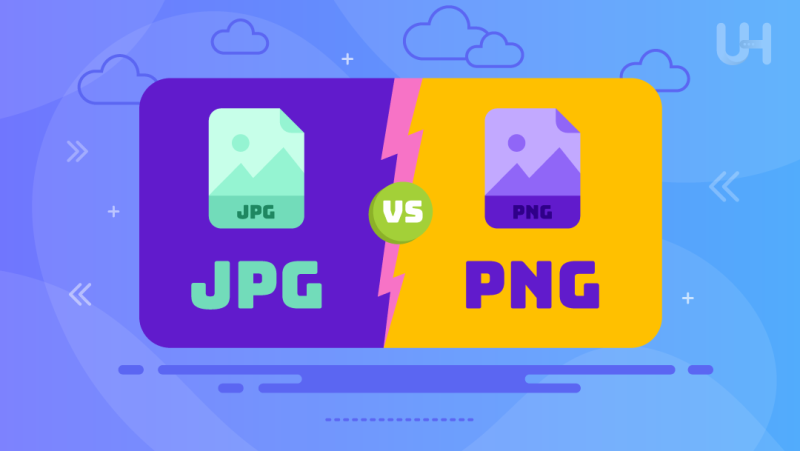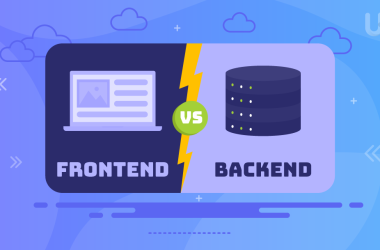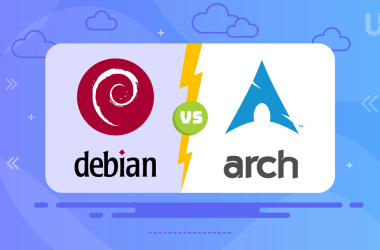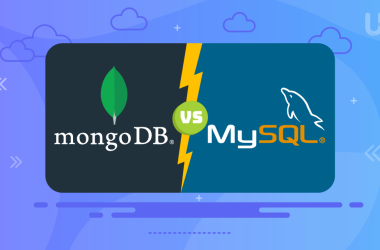In the digital age, images are crucial for communication, marketing, and personal expression. The format in which you save and share your images can significantly impact their quality and performance. Among the most widely used formats are JPG and PNG, each with unique strengths. JPG, or JPEG, is known for its ability to compress images to small file sizes while maintaining reasonable quality, making it ideal for photographs and web use where storage space and loading speed are priorities. PNG offers lossless compression and supports transparency, making it perfect for web graphics, logos, and detailed images.
Understanding the differences between PNG vs JPG helps you choose the right format for your needs, ensuring your images look their best and perform efficiently. In this blog, we will explore the features, uses, and advantages of each format to help you make informed decisions about your digital images.
What is JPG?
JPG, or JPEG, stands for Joint Photographic Experts Group, the organization that created this standard. Introduced in 1992, the JPG format revolutionized digital imaging by providing a way to compress large photographic files into more manageable sizes without significant loss of quality. This innovation made storing, sharing, and displaying digital images easier, contributing to the widespread adoption of digital photography and online image sharing.
Technical Details
JPG uses a lossy compression method, which means that some image data is discarded during the compression process to reduce file size. This compression is achieved by eliminating redundant or less important information, which can lead to a slight reduction in image quality. However, the level of compression can be adjusted, allowing users to balance file size and image quality according to their needs.
Typical JPG file sizes vary depending on the level of compression applied. High compression results in smaller files but lower image quality, while lower compression maintains higher quality at the cost of larger file sizes. JPG images can support a color range of up to 16.7 million colors with 8 bits per channel, making them suitable for reproducing complex and detailed photographs.
Common Uses
JPG is extremely popular in digital photography blogs due to its efficient compression and broad compatibility with various devices and software. Photographers and hobbyists alike use JPG to store and share their images because it offers a good balance between quality and file size.
In web design and social media, JPG is the go-to format for images. Its small file size ensures quick loading times, which is crucial for maintaining user engagement on websites using CRM hosting. Additionally, JPG’s compatibility with virtually all web browsers and image viewers makes it an easy choice for online content.
JPG is also well-suited for email attachments and document embeds. Its compressed format allows for faster uploads and downloads, making it practical for sharing images in emails or embedding them in documents without excessively increasing file sizes. This versatility and efficiency have cemented JPG as a staple in digital imaging across various applications.
What is PNG?
PNG stands for Portable Network Graphics. Developed in the mid-1990s, PNG was created as an improved, non-patented replacement for the Graphics Interchange Format (GIF). The format was designed to address the limitations of GIF, offering better compression and more advanced features like support for transparency. PNG quickly gained popularity due to its superior quality and versatility in handling digital images.
Technical Details
PNG uses lossless compression, which means that no image data is lost during the compression process. This results in larger file sizes compared to lossy formats like JPG, but it preserves the original quality of the image, making PNG ideal for images that require precise detail and clarity.
One of PNG’s standout features is its support for transparency through the alpha channel. This allows for varying levels of opacity, enabling the creation of images with smooth edges and transparent backgrounds. This is particularly useful for web graphics, where images often need to be placed over different background colors or patterns.
Typical PNG file sizes are larger than JPGs due to the lossless compression, but the exact size can vary depending on the image’s complexity and the level of detail. Despite the larger file size, PNG files are often preferred for images where quality and detail cannot be compromised.
Common Uses
PNG is highly popular in web design, especially for images requiring transparency. This makes it an excellent choice for web elements like logos, icons, and buttons that need to blend seamlessly with various background colors or patterns. Web designers rely on PNG for its ability to maintain high-quality visuals and support transparent backgrounds, ensuring a clean and professional look.
In graphics design, PNG is favored for detailed images and illustrations. The format’s lossless compression ensures that every detail is preserved, which is crucial for graphics work where precision and clarity are paramount. Designers often use PNG files when creating complex graphics, diagrams, and artwork that require high fidelity.
PNG is also suitable for logos, icons, and images that require frequent editing. Because the format does not lose quality with each edit and save, it is ideal for graphics that undergo multiple revisions. This makes PNG a reliable format for designers who need to maintain the integrity of their images throughout the editing process.
Overall, PNG’s combination of lossless compression, transparency support, and ability to preserve fine details makes it an indispensable format in the realms of web and graphic design.
Ready to Optimize Your Digital Images?
For fast and reliable web hosting that ensures your optimized images load quickly and look great, check out Ultahost’s web hosting solutions. Boost your website’s performance and provide a seamless experience for your visitors with Ultahost.
Key Differences Between JPG and PNG
JPG vs PNG: Compression and File Size
One of the most significant differences between JPG and PNG is the method of compression each format uses. JPG employs lossy compression, which reduces file size by discarding some of the image data. This process can significantly shrink the file size, making JPGs ideal for situations where storage space and quick loading times are essential. However, this comes at the cost of some loss in image quality, which may become noticeable with high compression levels.
In contrast, PNG uses lossless compression, preserving all the original image data. This results in larger file sizes compared to JPGs, but the image quality remains intact. Lossless compression makes PNG a better choice for images that need to retain every detail and for graphics that will undergo multiple edits without degradation in quality.
JPG vs PNG: Image Quality
The differences in compression methods directly affect image quality and clarity. JPG’s lossy compression can lead to artifacts and a loss of detail, particularly in images with sharp contrasts or fine text. This makes JPG less suitable for images where maintaining high fidelity is crucial.
On the other hand, PNG’s lossless compression ensures that image quality remains high. This format excels at preserving fine details, making it ideal for images with text, intricate graphics, and sharp lines. The clarity of PNG images is superior to that of JPG, especially for images that require precision and detail.
JPG vs PNG: Transparency and Layers
Another key difference is PNG’s support for transparency and alpha channels. PNG can handle varying levels of opacity, allowing images to have transparent backgrounds or semi-transparent areas. This is particularly useful for web design, where images need to blend seamlessly with different background colors or patterns.
JPG does not support transparency, limiting its use in applications where this feature is necessary. Any attempt to create transparent areas in a JPG image will result in a solid color fill instead. This lack of transparency support makes JPG less versatile for certain design tasks compared to PNG.
JPG vs PNG: Color Depth and Range
Both JPG and PNG support a range of color depths, but there are notable differences. JPG typically uses 8 bits per channel, allowing for a color palette of up to 16.7 million colors, which is sufficient for most photographic images. This makes JPG well-suited for photographs and other images with subtle color gradations.
PNG, however, can support higher color depths, including 24-bit and even 48-bit color in some implementations. This capability allows PNG to represent images with a broader and more precise color range, which is beneficial for detailed graphics and images requiring exact color reproduction. For example, graphic designers often choose PNG for artwork and logos that demand accurate colors and high detail.
Practical Tips for Choosing Between JPG and PNG

JPG vs PNG: Assessing Your Needs
Determining the right format for your project involves understanding the specific requirements of your images and how they will be used. Here are some key factors to consider:
- Purpose and Context: Ask yourself what the primary use of the image will be. Is it for a website, social media, a professional presentation, or print? For web use where quick loading times are critical, JPG is often the better choice due to its smaller file size. For high-quality prints or professional graphics, PNG may be more suitable.
- Image Content: Consider the content of your image. Photographs with complex color gradations and subtle details typically work well as JPGs. Images with text, sharp lines, or transparent backgrounds are better suited for PNGs to maintain clarity and detail.
- Editing Needs: Think about whether the image will undergo multiple edits. PNG’s lossless compression makes it ideal for images that need to be edited repeatedly without quality loss. JPG’s quality can degrade with each edit and save, making it less ideal for frequent modifications.
- File Size Constraints: If storage space or bandwidth is limited, JPG’s smaller file size might be advantageous. Conversely, if maintaining the highest possible image quality is more important than file size, PNG is the way to go.
JPG vs PNG: Best Practices
To optimize your images for web use while balancing quality and file size, follow these best practices:
- Use the Right Tool: Choose the appropriate image optimization plugin for saving and optimizing your images. Tools like Adobe Photoshop, GIMP, and online services like TinyPNG can help you fine-tune the balance between quality and file size.
- Adjust Compression Settings: For JPGs, use the highest compression level that still maintains acceptable quality for your needs. Many image editors allow you to preview the image at different compression levels, helping you find the best compromise.
- Resize Images: Scale your images to the exact dimensions needed for your project. Larger images than necessary only increase file size and load times. Resize images in an image editor rather than relying on HTML or CSS to scale them down.
- Use PNG for Transparency: When your design requires transparent backgrounds or elements, opt for PNG. This is essential for logos, icons, and overlays that need to blend seamlessly with varying backgrounds.
- Optimize PNGs: Even though PNGs are lossless, they can still be optimized. Use tools like PNGGauntlet or ImageOptim to reduce file sizes without losing quality. These tools remove unnecessary metadata and compress the image data more efficiently.
- Balance Quality and File Size: Aim for a balance that meets your needs. For JPGs, this might mean slightly sacrificing quality for a significant reduction in file size. For PNGs, it might mean accepting a larger file size to ensure the image remains clear and detailed.
Conclusion
In conclusion, understanding the differences between JPG and PNG formats is essential for anyone working with digital images. Each format has distinct advantages and is suited to different types of projects. JPG is ideal for photographs and scenarios where file size and loading speed are critical, while PNG excels in preserving image quality, handling transparency, and supporting detailed graphics.
For an even more seamless online experience, consider enhancing your website with reliable hosting. Check out Ultahost managed WP hosting solutions to ensure your site performs at its best. With optimized hosting, your beautifully crafted images and engaging content will load quickly and look stunning, providing the best experience for your visitors.
FAQ
What is the main difference between JPG and PNG?
The main difference lies in their compression methods. JPG uses lossy compression, which reduces file size by discarding some image data, leading to a slight loss in quality. PNG uses lossless compression, preserving all image data and maintaining the original quality.
When should I use JPG?
Use JPG for photographs and images where file size and loading speed are critical, such as for websites, social media, and email attachments. JPG is ideal for images that do not require high levels of detail or transparency.
When should I use PNG?
Use PNG for images that require high quality and detail, such as graphics, logos, and images with text. PNG is also the best choice for images needing transparency, as it supports alpha channels for varying levels of opacity.
Does JPG support transparency?
No, JPG does not support transparency. Any transparent areas in a JPG image will be filled with a solid color. If you need transparency, use PNG instead.
Which format is better for web use PNG or JPG?
Both formats are useful for web use, but they serve different purposes. JPG is better for photographs and images where file size is a concern. PNG is better for graphics, logos, and images requiring transparency or high detail.











